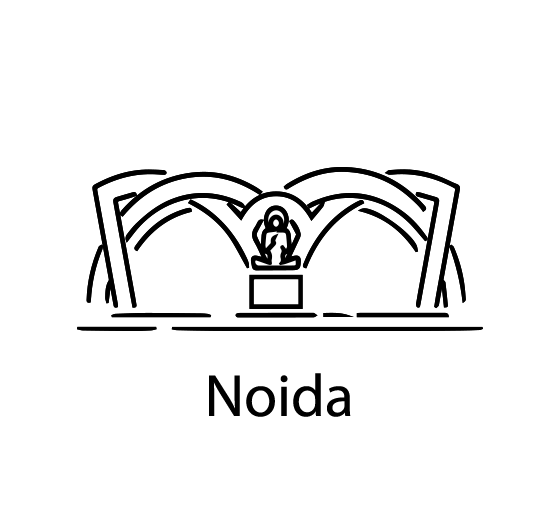Air Conditioning Not Working in Your Car? Learn 3 Common Problems
Is Your Car’s Air Conditioning Malfunctioning? Discover How to Fix Three Typical Ac Issues.
Your day can be quickly ruined if the air conditioner in your automobile breaks down unexpectedly. Leaks or problems with the compressor are the two most frequent reasons for faulty air conditioning. If your air conditioner is blowing chilly air but not frigid air, the issue may be a clogged filter, cooling fan or radiator malfunction, or it may just be that your AC needs to be recharged.
You don’t have to put up with an uncomfortable, stuffy car, and you don’t have to rely on the mechanic to remedy the issue either. Knowing where to start is the most difficult aspect of finding the ideal solution. To diagnose your individual temperature control issue before seeing the repair, look through this guide with three things to check. By being proficient in AC repair, you can save yourself some hard cash.
How to Identify Ac Issues in Your Vehicle
1. Is your AC cool but not cold?
If the fans are on high but only producing moderately cool air when the air conditioner is set to maximum cool:
- When the air conditioner is on, make sure the cooling fans on the condenser or radiator are operating.
- Check for any obstructions that can prevent air from passing over the condenser, such as leaves, bugs, or dirt.
- To make sure it is not clogged, inspect the cabin air filter.
Following this, use a manifold gauge set to continuously check the system pressure. You may look up the appropriate high-side and low-side pressures in the repair manual or online for your car. Move on to watching the AC compressor itself once your gauges are connected.
2. The Ac Compressor Should Be First.
It’s preferable to start with the compressor when troubleshooting an AC issue:
- While the engine is running, increase the fans’ speed, set the A/C to the maximum cool setting, and check that the compressor’s clutch is engaged. Note that this is the centre component that engages the pulley with the compressor shaft, not the pulley itself. Low refrigerant levels are indicated if the clutch engages and disengages once per few seconds or less. When the clutch engages, you will also notice a sharp reduction in the low-side pressure on your gauge. The pressure will then rise as the clutch disengages after reaching a point of too low pressure. The gauge will remain stable while the compressor is running and ought to maintain the correct pressure as you add more refrigerant.
- Use a voltmeter to check whether the compressor is receiving power if the clutch isn’t engaging and there is refrigerant in the system.
- The clutch could be damaged if there is voltage.
There may be a broken cycling switch, a blown fuse, or insufficient refrigerant pressure in the system to trip the low pressure cutoff switch that cycles the compressor if there is no electricity.
3. Leaks Are the Main Source of Issues.
The most frequent issue with the air conditioning system is leaks.
There might be a leak if pressure is low:
- The simplest method for locating a leak is to use a UV A/C leak detection kit. Put UV dye and UV light into the system according to the instructions on the package to find the leak.
- Verify that every fitting is secure by walking around it.
- On the compressor, inspect the hose manifolds.
- Verify the o-rings sealing the pressure switches on the back of some compressors as well as the front seal.
- Verify the areas of the fittings where the hoses are crimped.
- Schrader valves should be examined.
- Inspect the condenser for pinholes.
- Use a UV light to inspect the area where the evaporator drains condensate. Oil or colour may occasionally be seen.
- If the system is too low and the compressor is not cycling, the dye check will not function.
- Still uncertain? Look at these components
- AC compressor and a clutch
The System’s Refrigerant (Freon) Is Circulated Throughout by a Revolving Pump Called the Air Conditioner Compressor.
Leaks in one or more seals or the compressor itself are frequent issues. The most common cause is particle pollution from worn parts inside the compressor. The engagement clutch, also known as an AC clutch, can malfunction and stop the compressor from working.
If the Refrigerant Level Is Low, Look for Obvious System Leaks That Are Green and Oily.
Internal parts that wear out too quickly or leaks that result in low AC oil levels AC clutch failure A blown fuse, faulty pressure control switch, dash control module, or a severed circuit wire all contributed to the AC clutch’s inability to receive power. Check and test before replacing!
DRIER/ACCUMULATOR FOR AC
Moisture is gathered and absorbed by the accumulator/drier. Moisture can harm the AC compressor and interior system parts like it were poison. You might have a receiver/drier or an accumulator, depending on your car.
Common Issues: Desiccant material might enter the AC system due to internal failure. These substances when used improperly can have serious consequences, such to sugar in the gas tank. Leaks may result in an overly moist desiccant substance, which could harm the compressor.
Ac Orifice Tube/expansion Valve
Your air conditioning system’s AC orifice tube/expansion device filters and controls the refrigerant flow. You can have an expansion valve or an orifice tube, depending on your car.
Common Issues: Failure is primarily caused by contamination. The expansion device may be at fault if the system pressures are either too high or too low. But first, make sure the radiator/AC condenser fan(s) are functioning correctly and that the refrigerant levels are accurate. Before replacing, don’t forget to inspect and test!
CONDENSER AC
The radiator-like AC condenser functions in tandem with the radiator fan (s). The hot (gaseous) refrigerant that absorbs heat from inside the car is cooled by air moving across the AC condenser tubes. This transforms the refrigerant back into a liquid so that it may return to the evaporator core and absorb further heat from the interior of the vehicle.
Refrigerant leaks are a frequent issue. Poor cooling might result from contaminants in the AC compressor or accumulator/drier impeding the flow of refrigerant. While examining the AC condenser, inspect the radiator and the motor(s) for the AC cooling fans.
AC EVAPORATOR’S CORE
A large ice cube with holes acts as the AC evaporator. The hot cabin air is allowed to pass through the core, quickly cooled, and then blown back into the cabin. The blower motor assembly for the AC heater produces the cool air that is felt coming from the dash vents.
Common Issues: A leak brought on by ageing and wear is the leading cause of failure. The best approach to check for leaks is with an electronic leak detector. Pay close attention to the water drain tube in the AC evaporator box. Find a leak by using the tester. If there are significant leaks, a green and greasy substance might develop in the drain tube.
Tserv Advice & How-advice, To’s how-to articles, and automobile care information are provided as general resources for general maintenance and auto repairs only and are to be utilised at your own risk. To the best of Tserv’s understanding, the information is genuine and correct. Omissions, inaccuracies, or mistakes could exist, though.
For instructions on how to fix your automobile, consult your owner’s manual, a repair manual, a Tserv at a nearby store, or consult a qualified, experienced mechanic. For information on specific diagnostic, repair, and tool information for your particular vehicle, consult the service manual. Before raising a car, always chock the wheels. To safeguard the vehicle’s electrical circuits in the event that a wire is unintentionally punctured or grounded, always detach the negative battery line before servicing an electrical application. When handling car batteries, exercise caution. Because sulfuric acid is corrosive, it can burn flesh and clothing and even result in blindness. Always operate in a well-ventilated location while donning gloves, safety glasses, and other personal protection gear. Immediately neutralise electrolyte that has gotten on your skin or clothing with a solution of baking soda and water. When working on your car, avoid wearing ties or baggy clothing.
Multi-Brand Car Service Center:
Our Tserv Car Mechanics Are Available To Repair Your Car! There is no requirement to visit your car dealership again. Book Tserv Car Services Center Right Away. ( Click to chat via WhatsApp )
Check our Car Service Center’s in Bangalore City near you. Click Url
Check our Car Service Center’s in Mumbai City near you. Click Url
Check our Car Service Center’s in Delhi City near you. Click Url
Other Cities: Faridabad, Noida, Gurugram, Thane, Greater Noida




























